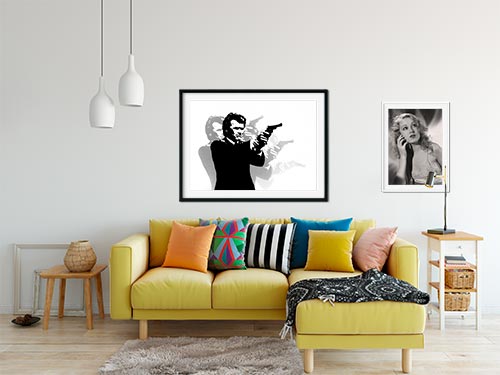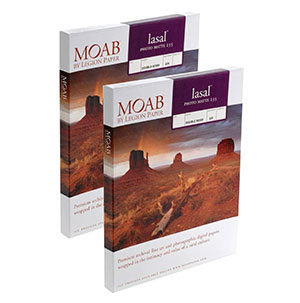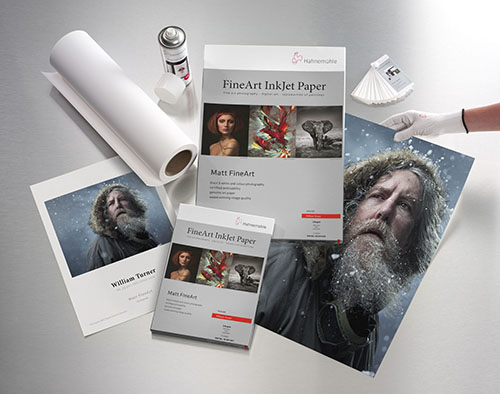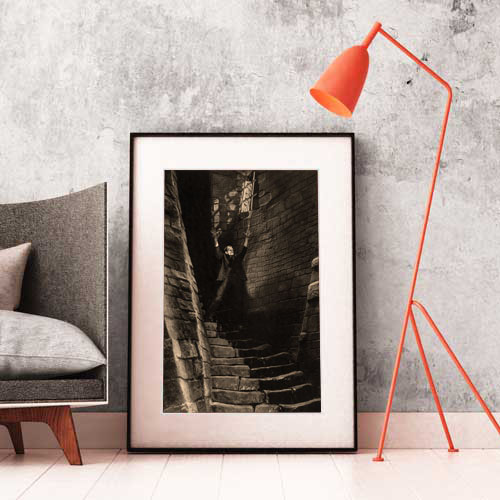Sensational publicity photograph featuring Leonard Whiting (Dr. Victor Frankenstein) looking up as he opens a brown leather satchel revealing a bloody severed arm.
Frankenstein: The True Story is a 1973 British television movie loosely based on the 1818 novel Frankenstein; or, The Modern Prometheus by Mary Shelley. It was directed by Jack Smight, and the screenplay was written by novelist Christopher Isherwood and his longtime partner Don Bachardy. The film stars Leonard Whiting as Victor Frankenstein, Jane Seymour as Prima, David McCallum as Henry Clerval, James Mason as Dr. Polidori and Michael Sarrazin as the Creature. James Mason's wife Clarissa Kaye-Mason appeared in the film.
The character of Dr. Polidori, who did not appear in the original novel, was based on the character of Dr. Pretorius from Universal Pictures Bride of Frankenstein, but named after the real-life John Polidori, an acquaintance of author Mary Shelley who was part of the competition that produced her novel. Polidori's own contribution was the first modern vampire story The Vampyre (1819). A notable feature of the production is that, instead of being ugly from the start, the Creature is portrayed as physically beautiful, but then becoming increasingly hideous as the film progresses.
The make-up was by Hammer horror veteran artist Roy Ashton. It was broadcast on NBC in late 1973 in two 90-minute parts, but often is seen edited into a single film. Its DVD debut date was September 26, 2006. Included at the beginning is a short introduction featuring James Mason wandering through St John's Wood churchyard, London. He suggests that this is where Mary Shelley is buried, which is incorrect (she is in fact buried in the family plot in Dorset) despite standing beside a gravestone bearing her name.
The film's development and production has been detailed extensively in Little Shoppe of Horrors #38 - which was released in June 2017 - by film director/historian Sam Irvin, who served as guest editor on this issue. The script for the film by Don Bachardy and Christopher Isherwood was published in paperback as a movie tie-in novel. The script contains a prologue in which Mary Shelley is telling her tale of horror to Percy Shelley and Lord Byron, as Dr. Polidori sulks nearby.
As she reaches their parts in the tale, they rush to join the main action and the story proper begins. Some shots in the film indicate that at least part of this prologue may have been filmed. If this segment had been included, it would have featured Nicola Pagett as Mary, Leonard Whiting as Shelley, David McCallum as Byron, and James Mason as Polidori.
The script contains an epilogue following the avalanche: The season changes, and the northern ice begins to break apart. The Creature's body, still entombed in the remainder of the iceberg, begins to float south into warmer waters. As the ice melts, one of his hands is exposed. Absorbing the rays of the sun, the hand responds, flower-like, and slowly begins to open.
Product Enquiry
Kodak Professional Endura Paper
Kodak Endura papers provide an incredible amount of detail and smooth transition of tones. Designed for the professional photographer in mind, looking for a more traditional photo print style, Kodak Endura provides an extended print life and color gamut almost at the level of a high end fine art paper print.
Archival Matte Paper
Archival Matte Paper, also known as Moab Lasal Photo Matte, is our house stock fine art paper and is an economical favorite for fine art reproductions and photo prints. It features a smooth surface, heavy weight (230 g, 9.5-mil), neutral white, matte paper engineered for accurate color reproduction that provides high contrast and high-resolution output. This paper is acid-free, making it the perfect choice for both photography & fine art reproductions.
Giclee William Turner Paper by Hahnemühle
The William Turner by Hahnemühle is one of the most popular papers used in the Giclee printing industry. This is a 310g natural white mould made natural line paper with 100% rag content making it highly archival. It has a slight coarse texture which gives photos and artwork an elegant look. These fine art paper prints (also known as Giclee) are ordered by galleries, individual artists and photographers. The papers and inks are not only archival but use some of the most accurate print technology for full color prints.
- Giclee prints use very expensive archival pigmented inks.
- Highest level of color gamut available in printing (12 color printing).
- Exceptional black & white printing.
- Fade resistant, pigmented inks which provide a superior color range compared to other types of inks. Widely preferred in fine art and photography circles.
- We ONLY use professional grade fine art and photo paper that resist yellowing and aging.



Framing
We offer wood and metal frames, custom cut & joined to order. Each framed print includes hanging hardware and foamcore backer.
Matting
We use conservation grade 100% virgin alpha-cellulose 2 ply mats with white core. Acid-free and lignin-free, these are both face resistant and meet all conservation quality standards set by the Fine Art Trade Guild. Mats are digitally cut for ultimate precision. The window will be 1/8″ smaller than the print dimensions.
Glazing (Acrylic Glass)
We offer custom cut panes of shatter-proof, acrylic glass, to protect your valuable artwork and prints.
Premium Clear
Framing grade clear acrylic is shatter resistant and lightweight.
Reflection Control
With its matte finish, Tru Vue Reflection Control® Acrylic scatters light to diminish unwanted glare.
Conservation Clear
Tru Vue Conservation Clear® Acrylic is a framing industry staple, blocking up to 99% of UV rays for ultimate protection.
Conservation Reflection Control
Tru Vue Conservation Reflection Control® Acrylic scatters and diffuses light to reduce unwanted glare. Blocks up to 99% of UV rays.







